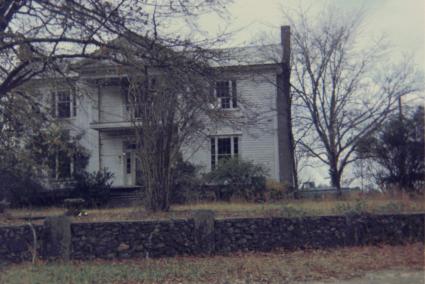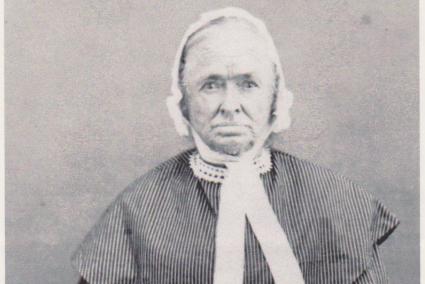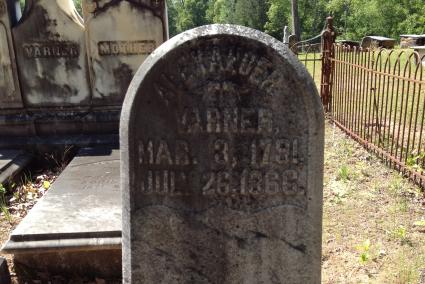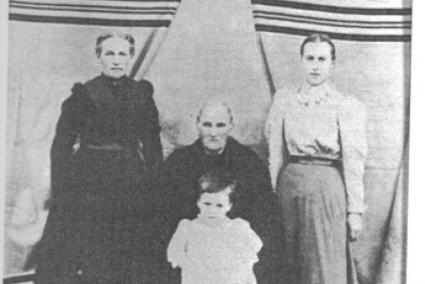The Story & History
This impressive Antebellum home was built in the early 1840’s by Alexander Varner on his plantation, about 3 ½ miles south of Cussetta. A veteran of the war of 1812, Alexander Varner, at the age of 46, moved to this area from Monroe County, Georgia about 1836-1837 with his second wife and six children. His property was located on the Cussetta-Opelika Road at the fork of the Cusseta-Oakbowery Road.
The construction of the home was begun soon after his arrival and it was designed to be like his old home near Forsythe, Georgia where he and his brother had similar houses and adjoining plantations. The house was of the two-up and two-down plan, with the middle halls and a one story extended wing on one side of the ground floor. Four large fluted wood columns support the pediment of the front porch, with a second floor balcony opening from the upstairs hall. The original kitchen was located away from the house with a lattice walkway leading to the house.
The interior of the house shows examples of excellent craftsmanship with the detail of woodwork, stairs, wainscoting and carefully fitted interior sheathing of wide pine boards. The downstairs ceilings are 11 ½ feet in height and the upstairs are 9 ½ feet in height. The floors are heart of pine plank boards and the downstairs ceilings are all wood.
During the Civil War, Rousseau’s troops came though Chambers County. Alexander Varner was an old man when the Union troops threatened him with hanging if he didn’t reveal where his money was hidden. When he would not tell, some say he was hanged by the neck in the attic of the house. The knot wasn’t tied correctly and after the soldiers left, his wife cut him down. He lived but spoke with a gasp the rest of his life. Family members also tell that when a few union soldiers came through another time, they were going to burn the house, but the commanding officer recognized Varner as being one of his class mates at Harvard and saved the house.
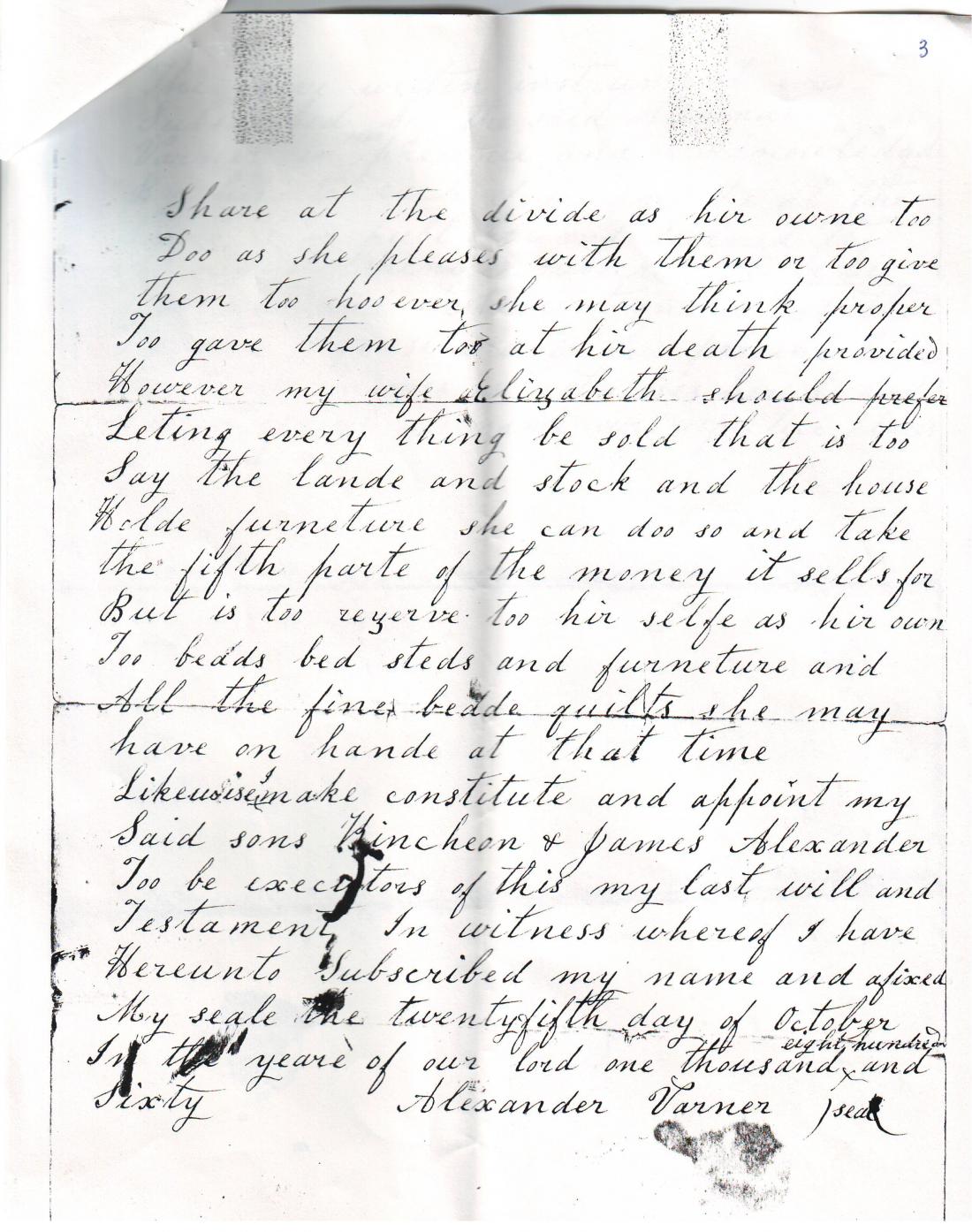
Alexander Varner's will 1860
On July 26, 1866 Alexander Varner died and was buried in Cusseta. To this day, there is still a Varner family plot fenced off in the Cusseta Cemetary, with aging headstones of at least 3 generations of the family. In the years that followed, the house was sold to the Fletcher family who lived there for many years. While the Fletchers lived in the house, a crib room was added to the back of the house near the master bedroom.
In the early 1970’s a great-great-great grandson of Alexander Varner moved the house from Cusseta to its present Oakbowery location. The new location chosen for this home was 20 acres on the Chambers-Lee county line 8 miles north from downtown Opelika., in a community named Oak Bowery.
The property is located along the route of the railroad line between Opelika and Lafayette. The old railroad bed can still be seen in the woods in front of the house. A spring, still located on the property, was used by the travelers on the railroad as a picnic area in the horse & buggy days.
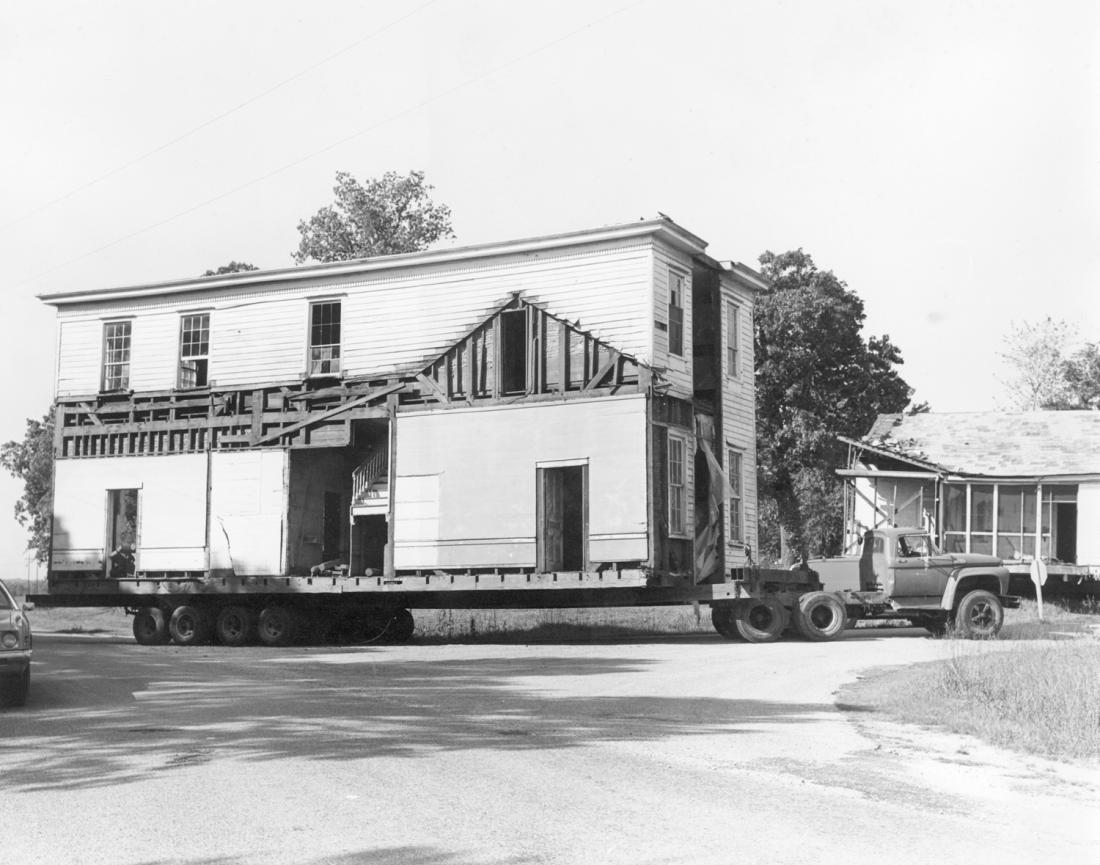
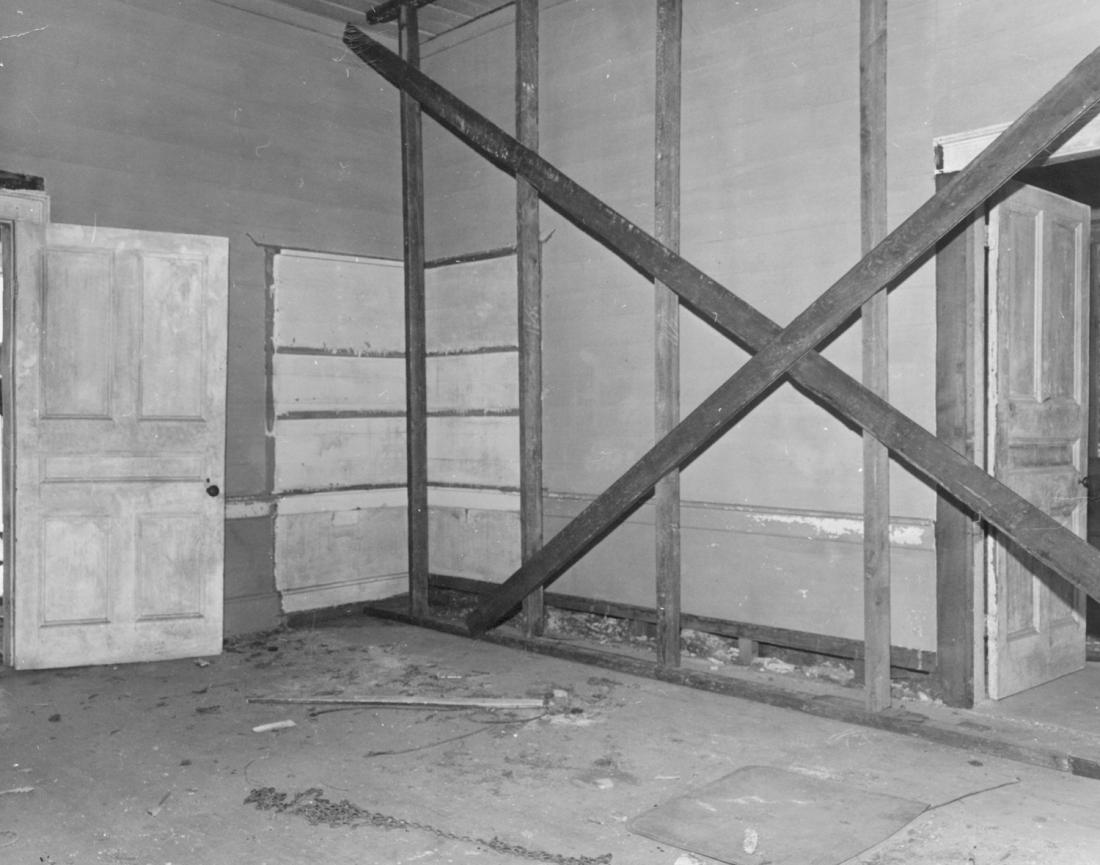
Restoration began on the house with the back porch being enclosed to provide space for a laundry room and kitchen. The rear of the center hall is now a spacious breakfast room and the crib room has been converted into a bath and dressing room with closets.
The Dudley family purchased the home in 1977 and completed much of the restoration. Great effort was taken to preserve as many of the original features of the grand home as possible. The wide heart of pine plank floors, interior sheathing and wainscoting are of particular note. The house has six fireplaces, with the original pine mantels. There are five original Carpenter locks with maker's seals. The tall front windows with sidelights have been reworked and the four front wood columns and balcony have been repaired
Also, during restoration, modern conveniences and energy-saving features were added. The house was covered with vinyl siding for ease of maintenance. Insulation was placed in the walls, the attic and under the floors; storm windows, ceiling fans and two central heating systems were installed. A large covered porch was built off the kitchen to provide outdoor living space. A detached, two-story, three car garage, has a workshop and a large storage area.
The Busta family moved into this grand old home in August 1992. They immediately started working with Jim Barganier, a noted architect with Barganier, McKee, and Sims, of Montgomery.
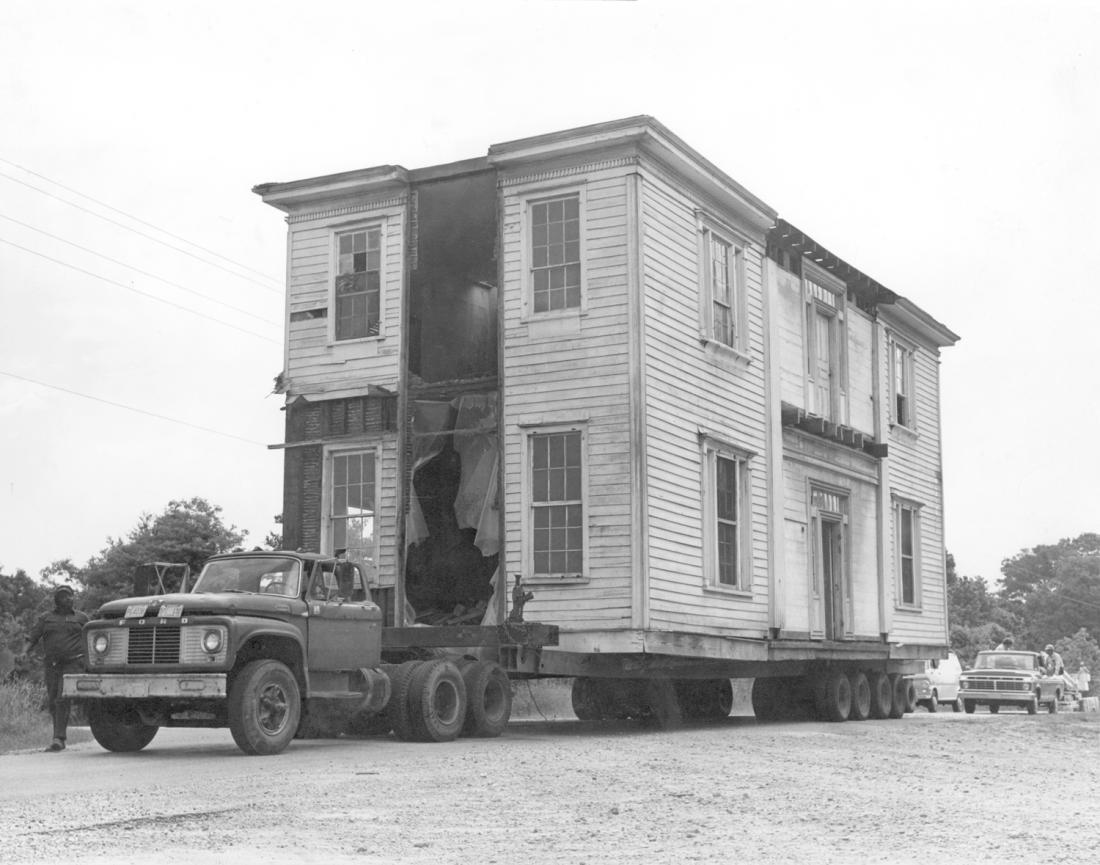
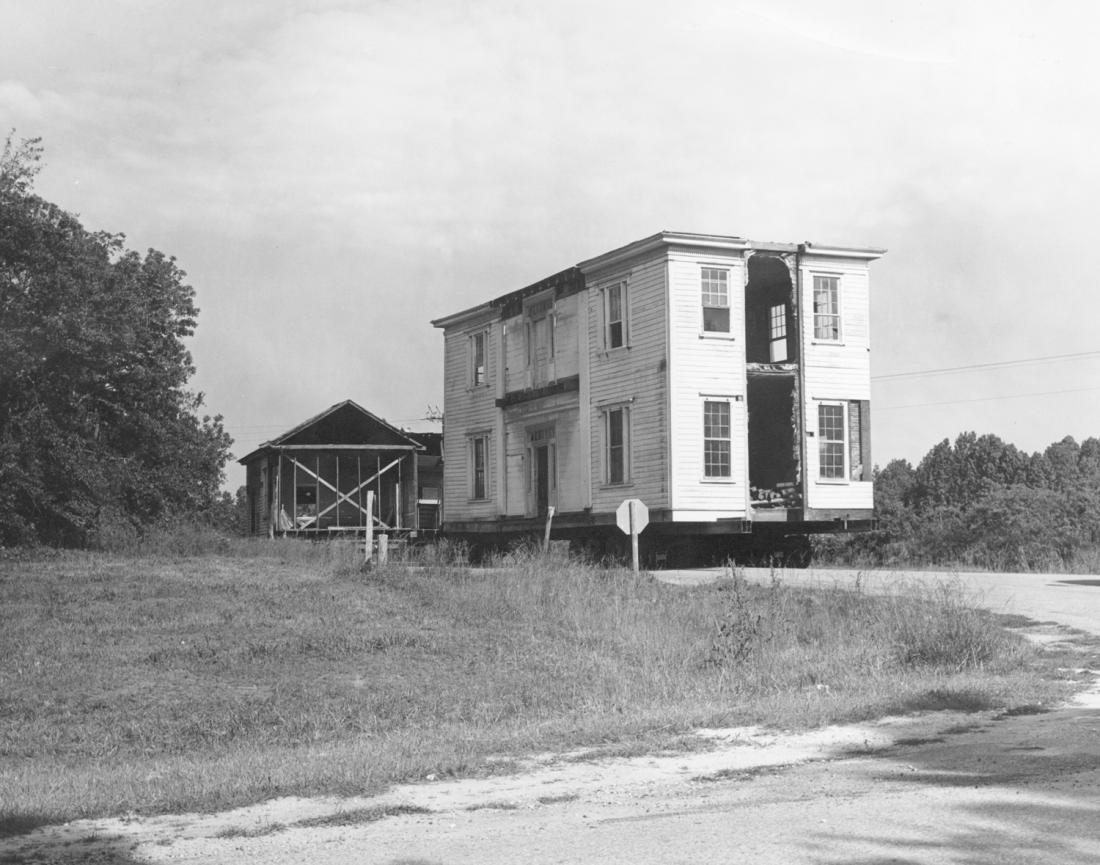
In 1996, The Varner home was purchased by Laura Prange and Rex Gandy. At the time, they were Professors teaching at Auburn University . Approximately 10 of the 20 acres was cleared, fenced and planted in Bahia grass for horse pasture. A horse barn was constructed. Adjacent to the barn, a horse training pen measuring 36 feet in diameter was built. In addition to the horse facilities, two tractor/Implement sheds have been constructed. Most of the barn and sheds are constructed from lumber derived from oak, cedar, and pine trees which were blown over during Hurricane Opal in the fall of 1995. These trees were cut and transported to the local sawmill in Gold Hill, where they were milled. A bridge across Tanbark Creek, in the rear of the property was also constructed.
In 1999, Deidra and Mitch White purchased the property as a second home to be closer to his family living in the area. A native of Jackson, Mississippi , Mitch moved to California in the late 1970’s at the age of 13. His Aunt Jo Ann Broadhead who was a local Realtor in Opelika, showed the property to them over a football game weekend when they were in town for a visit. Deidra and Mitch fell in love with the property and looked forward to having a second home with the opportunity to spend more time in The South with their Family, and hopes of having a family of their own to be raised with a touch of Mitch’s southern roots & upbringing. Additional upgrades and renovations were made to the Interior of the home, including new kitchen flooring, and 2 new downstairs bathrooms. In early 2000’s The White’s embarked on a 2 year project with major exterior changes to enhance the beauty of the estate and entrance to the property. A new main driveway was put in, including a stately stone - walled, gated entrance. Mitch’s mother Carolyn White named the property White Oaks , due to all of the White Oak trees growing on the grounds of the 20 acres. Over 60 Magnolia Trees from a local tree farm were planted adjacent to Highway 431 up in front of property and lined the driveway entrance. Over 100 azaleas & lugustrums were planted to enhance the grand entry into the property. New porches were added to main home, and a new guest house was constructed above the 3 car garage/workshop. Plans and groundwork began to construct a 2 acres fishing pond behind the main home. In 2015, The White’s purchased a Toomers Oak from Coach Pat Dye’s nursery during an annual Tim Hudson Charity Event. The new oak was transplanted it into a new backward flowerbed. Coach Dye had raised this 12 year old Oak, as a seedling from an acorn from the original Toomers Oak on Toomer Corner at Auburn University. He personally came out to deliver and help plant this piece of Auburn history with The White ‘s Family members. Read article »
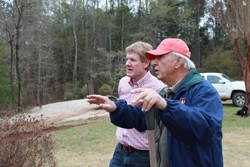
Pat Dye plants Toomer's oak in yard of Auburn fan
It was an Auburn fan’s dream come true last week, when legendary Tigers coach Pat Dye turned out to plant a genuine Toomer’s oak in the backyard of a home near Opelika.
The setting for this exceptional home is magnificent! The 20 plus acres are heavily wooded, mostly hardwood with hundreds of azaleas, dogwoods, daylilies, and other flowering shrubs. An ever-flowing spring creates a creek that meanders across the back of the property.
The years may not have always been kind to this extraordinary 170 year old house, but today it stands as a magnificent example of the workmanship and materials that are unavailable with modern construction. The superior quality and elegance of the latest renovations compliment the charm and character of the past in this unique property.
